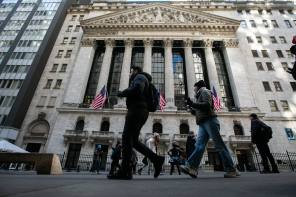
As an investor who likes contrarian ideas, it is always interesting to find a company that is a good business fundamentally but finds itself in the doghouse – where investors have forgotten the underlying mix of the business that is driving the growth.
G4S had a horrible year in 2012 after the high-profile mess it made of the Olympic contract and the poor performance of Nick Buckles, chief executive, in front of the Commons Select Committee, where he was forced to eat a large slice of humble pie. This came on top of another bad year in 2011 when the company failed to win over shareholders in its attempt to take over Danish cleaning company ISS.
So why does G4S make a good investment case at the present time? Firstly, we are near to a resolution of the Olympic contract, which will result in a loss of roughly £100m but will draw a line under the issue. The bears argue that the reputational damage caused by the Olympics will mean that the government will embargo G4S from future contracts and that the value of its government contracts is therefore zero – this is what the share price implies. In my view this will prove to be wrong and I would expect G4S to win a government contract very soon.
After two mistakes, the chief executive is regarded by some as being in the last chance saloon. A third mistake could prove fatal. But it was interesting to hear support from the largest shareholder last year, during the height of the furore over the Olympic contract, as it should not be forgotten that the company has come a long way under his tenure in the past seven years. A new chairman, John Connolly, started in September 2012 and his influence is already being seen on the group. The operational and board structure is now being improved with the appointment of chief operating officers and two new non-executives, and these changes will improve the quality of the business. Mr Connolly has a tough reputation and a good pedigree, having been chairman of AMEC and head of Deloitte in the recent past.
The market has forgotten that 30 per cent of G4S’s turnover comes from developing markets. The organic growth rate of this area is roughly 10 per cent, against an organic growth rate for the group as a whole of 5-6 per cent, which means that the developing markets become a bigger and more valuable part of the group every year.
This growth is driven by the faster growth rate of emerging markets, the strong market positions of G4S in many markets, and its ability to carry out more work for multinationals globally.
The valuation of the group is compelling against peers and against history. In no way can the shares be called expensive, so investors can enter when the shares are out of favour and valued at bargain basement levels.
Full settlement of the Olympic fine, the award of a new government contract, other contract wins – recently a BG contract win was announced – and a forthcoming investor day in 2013 should all act as positive catalysts, aiding rehabilitation.
In summary, G4S is a business that analysts think will grow at 5-6 per cent in 2013 driven by its exposure to emerging markets.
Chris White is manager of Premier Asset Management’s UK equity income funds



